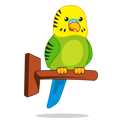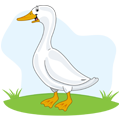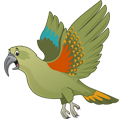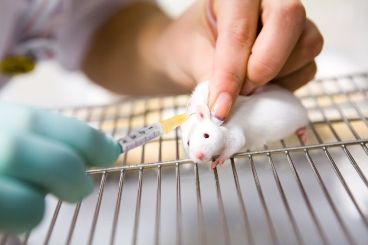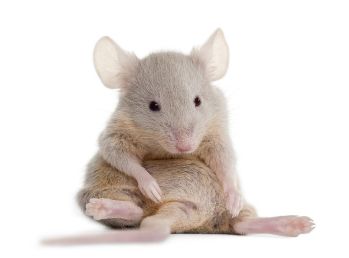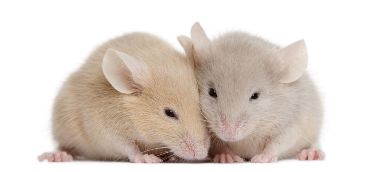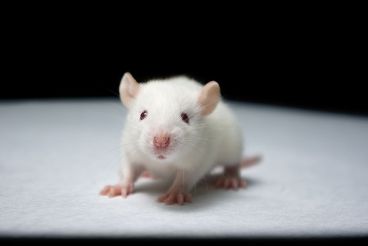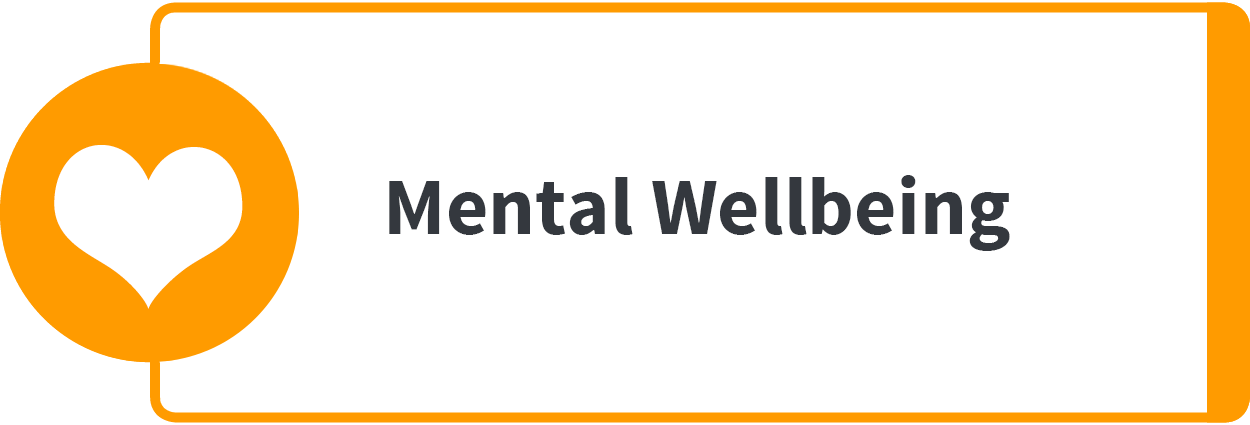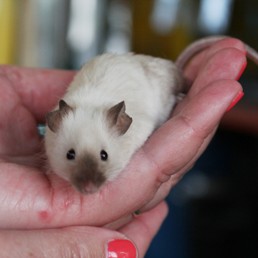 The first thing to remember when you are picking up or holding your mouse is this – you are much, much bigger than they are! A frightened mouse can be very difficult to pick up. They will run zigzags all over their enclosure in an attempt to elude the unknown giant hand coming to scoop them up. Although this is normal at first, the best way to pick up your mouse is to teach them not to be afraid of you. A trained mouse will walk right into your hand as soon as you put it in the enclosure.
The first thing to remember when you are picking up or holding your mouse is this – you are much, much bigger than they are! A frightened mouse can be very difficult to pick up. They will run zigzags all over their enclosure in an attempt to elude the unknown giant hand coming to scoop them up. Although this is normal at first, the best way to pick up your mouse is to teach them not to be afraid of you. A trained mouse will walk right into your hand as soon as you put it in the enclosure.
Mice should be allowed to investigate your hands in their own time. This will help prevent accidents and injuries.
Cupped hands technique
To pick up your mouse using the cupped hand technique, scoop them on one or both open hands and allow them to sit or walk over your hands without any physically restraining them. If you find that your mouse attempts to escape by jumping off your hands the first time you try to pick them up, gently close your cupping hands loosely around them until their attempts to escape start to decrease (for a maximum of 30 seconds). You can then open your hands and allow them to sit or walk around on your hands unrestrained. This closed cupping should not be necessary after the first handling session.
Tunnel handling technique
A home enclosure tunnel can also be used in combination with the cupped hand technique, to aid the picking up of a mouse. To pick up your mouse in this way, gently guide them into a home enclosure tunnel (one that is usually available in their enclosure and which has their enclosure scent on it) as you bring the tunnel forward. You can then allow them to crawl from the tunnel onto your cupped hands.
If you find that on the first time you handle your mouse, they attempt to escape by jumping out of the tunnel, close your hands loosely around the tunnel ends until their attempts to escape start to decrease (for a maximum of 30 seconds). You can then open your hands and allow them to crawl out of the tunnel onto your cupped hands. Covering the ends of the tunnel in this way should not be necessary after the first day or two of handling.
Tail technique
If you have to pick up a frightened mouse, the safest way to do so is by softly holding the base of the tail (the part closest to their body) and lifting up the mouse just enough to slide your hand under their body. Keep gently holding the tail, even when the mouse is in your palm to prevent it from jumping out of your hand. Mice typically will not jump on to anything if the fall is more than a foot or so, but frightened animals are unpredictable and may jump from heights sufficient to hurt themselves.
You should not squeeze the body of a mouse from the sides or try to scoop them up from their enclosure, as you could easily hurt them (remember, mice are tiny and it doesn’t take much to hurt them). Picking them up like this also frightens them so it’s best to stick to the methods mentioned above. You may have seen people pick up mice by their tails and lifting them up. While this doesn’t really hurt the mouse, it is an uncomfortable position for them and you run a much higher risk of damaging their tails. How would you like it if a giant carried you around upside-down by your leg?














